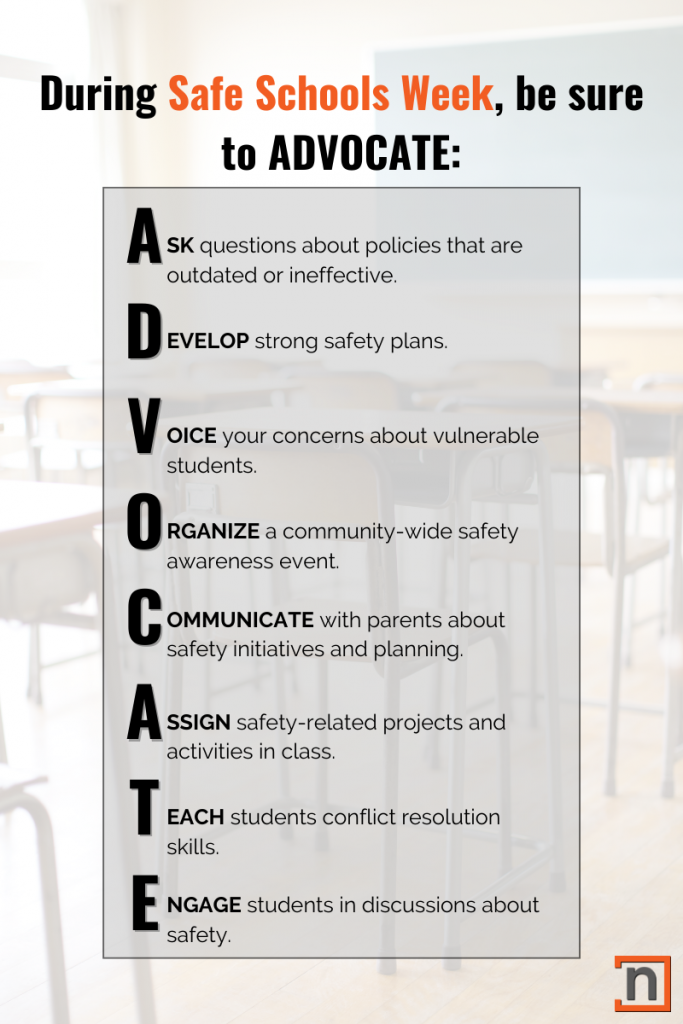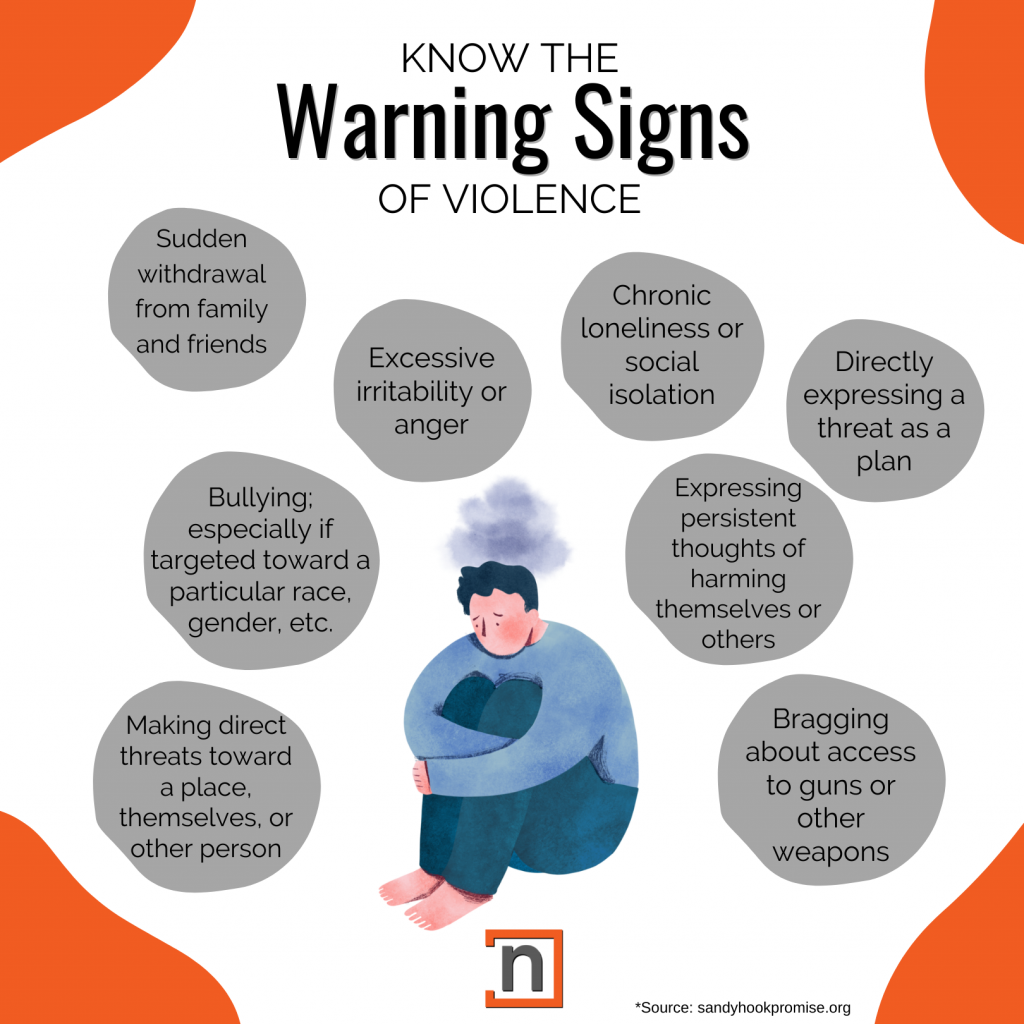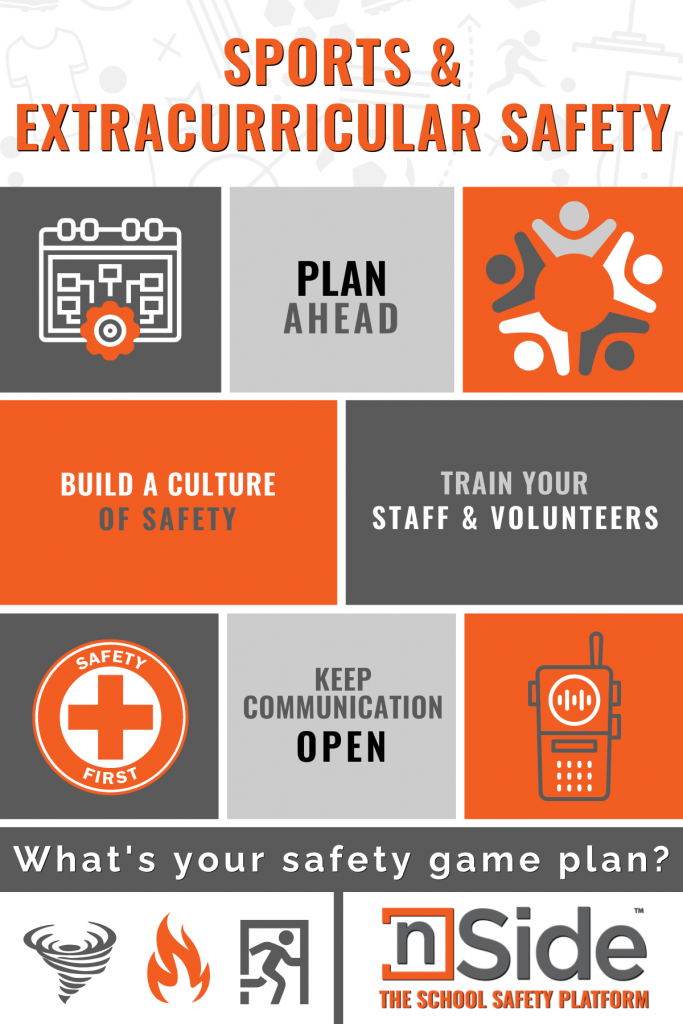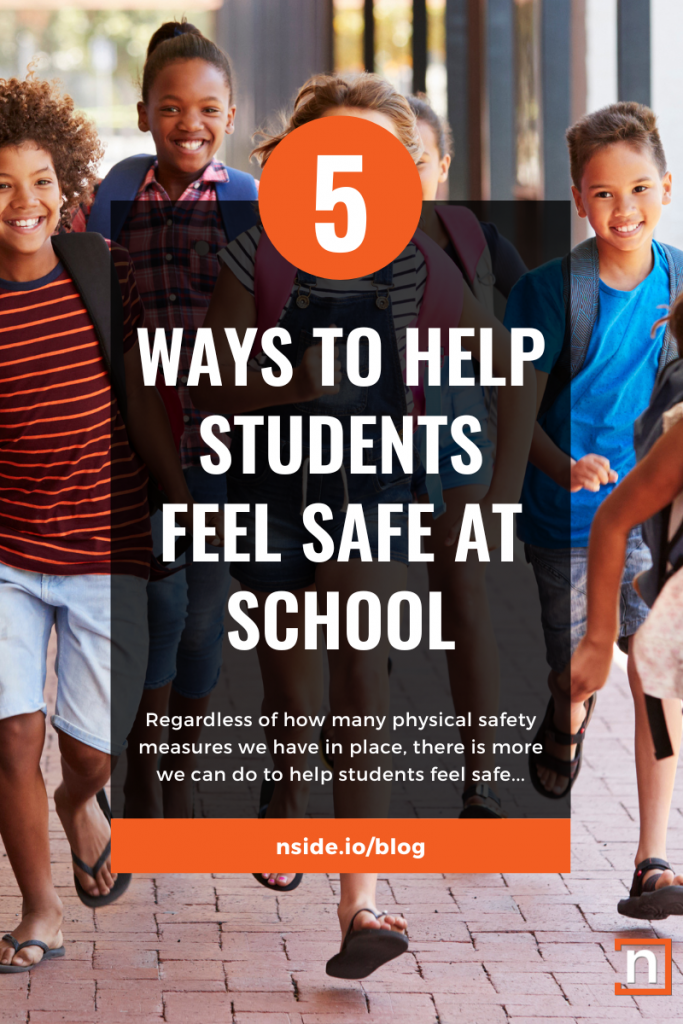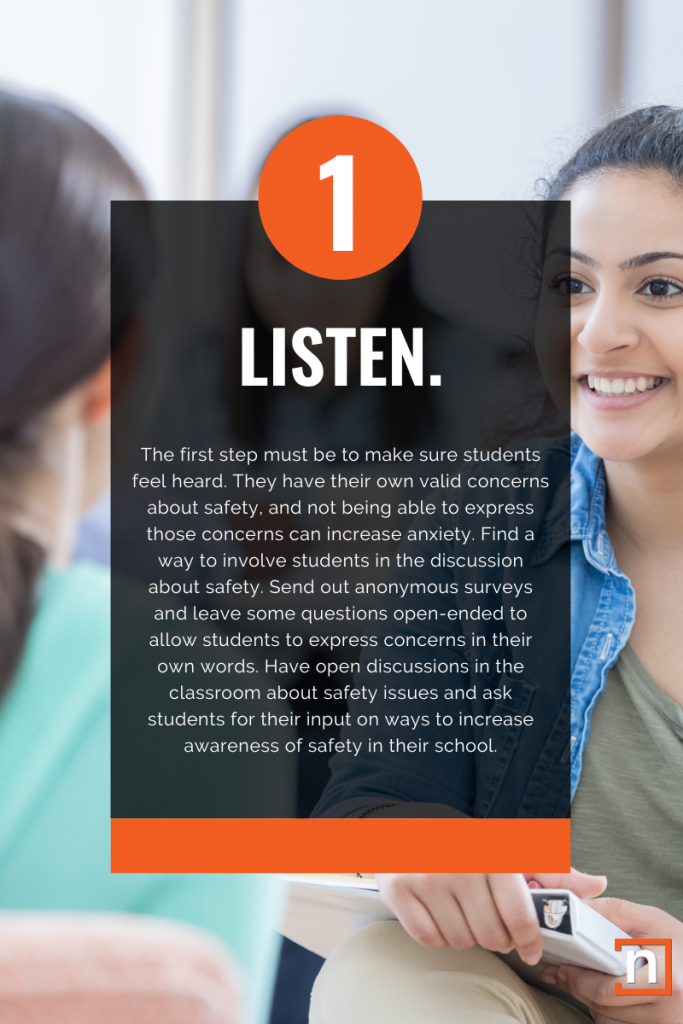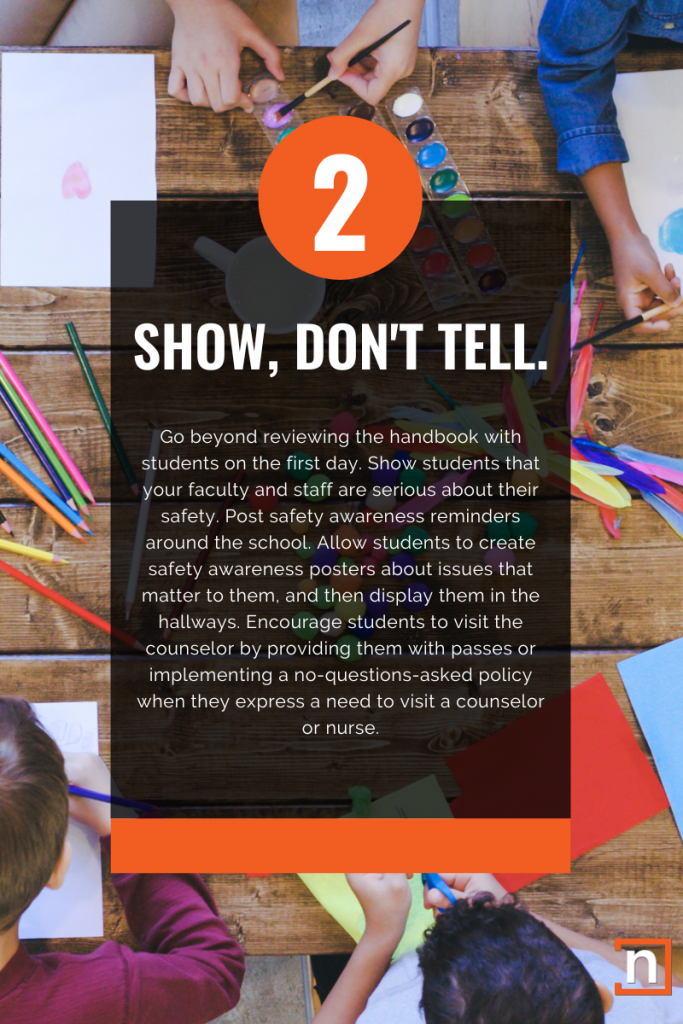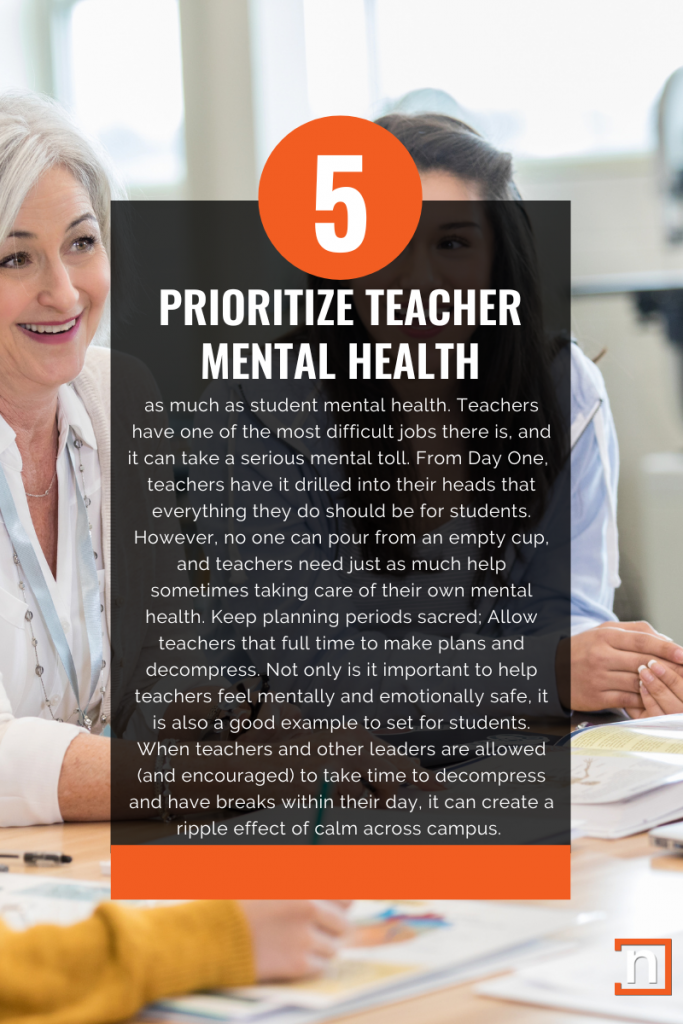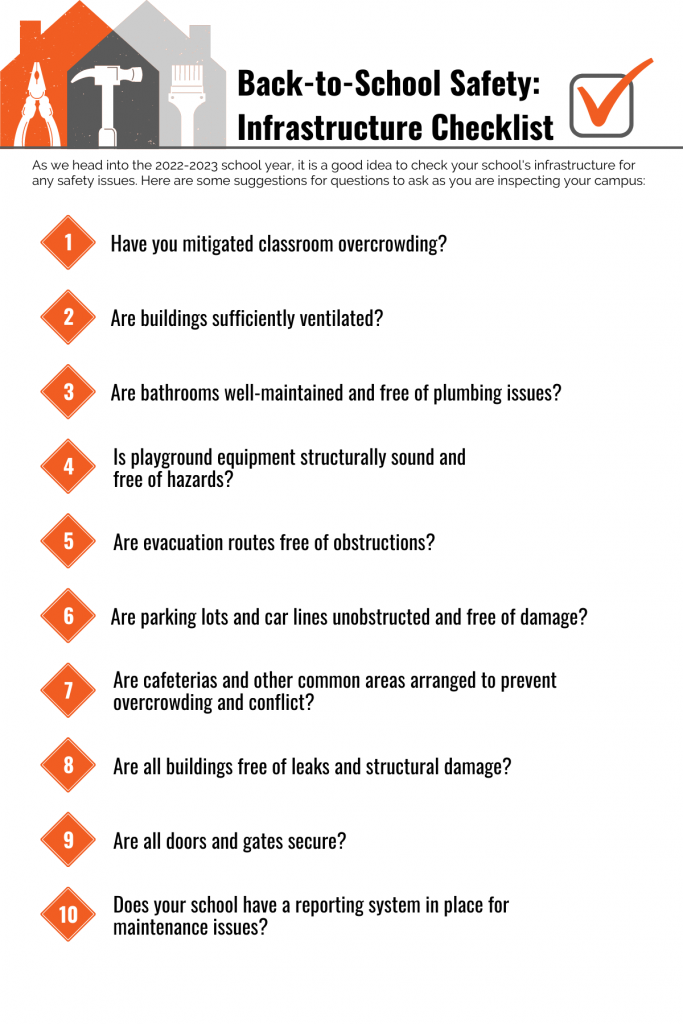School climate is one of the most important factors of school safety. It is an abstract term that we often hear but don’t entirely understand. So what are the elements of school climate and how do they relate to school safety?
Norms
It may be a gentler word for “rules” from a certain perspective, but “norms” of a school can define behavioral standards from top to bottom. What is allowed or disallowed creates boundaries for everyone on campus.
- Is lateness tolerated?
- Are students allowed to roam campus in the morning before the first bell rings? This may depend on where you are and what has happened in the school’s past to shape these norms.
- Does your school have a dress code or a uniform? Again, location and demographics may shape the norms surrounding school clothing.
- Do students take pride in their campus by contributing to cleanliness and decorating signs and hallways for holidays and big school events?
Letting students take part in maintaining the school environment can foster school spirit and help create a sense of safety and comfort in their own surroundings.
Values
There may be many similarities between what most schools value; however, it is important to set your school apart with specific values that are made clear to students. These values may even change over time, depending on societal changes and community climate. At certain points in time, values such as equity and inclusion become a core focus for a school that has struggled in the past with these issues. What is it that your school needs to focus on in order to cultivate shared values throughout campus?
Some schools value community service and make service hours a required part of the curriculum. Others may value sustainability and create green spaces on campus where students can grow and monitor plants and vegetables as a part of their curriculum. Many schools value athletics and choose to generate school pride through their mascots and athletic events. Schools must be careful, however. Focusing too much attention on one value, such as using athletics as the sole generator of school spirit, can leave non-athletic students feeling alienated and not part of the school community. Whatever they are, it is important to have a variety of values that reflect the entire student body. Doing so ensures that students feel valued and gives them a sense of safety and belonging.
Expectations
Expectations are often confused with rules. Rules can be one-dimensional and restrictive. Expectations are less about reinforcing rules and more about sustaining a culture that is valued by everyone in the school. Having school-wide expectations in place also reduces the pressure on teachers to enforce rules that may be vastly different from other teachers’ rules and may cause frustration for students.
School-wide routines and traditions are essential to expectations as well. Examples of these routines include student orientation programs, student and faculty handbooks that outline school values, school-wide reward and consequence systems, morning announcements that reiterate expectations, and simply maintaining a consistent schedule with as few interruptions to student learning as possible. Consistent expectations and routines create an environment of stability, a crucial factor of school safety.
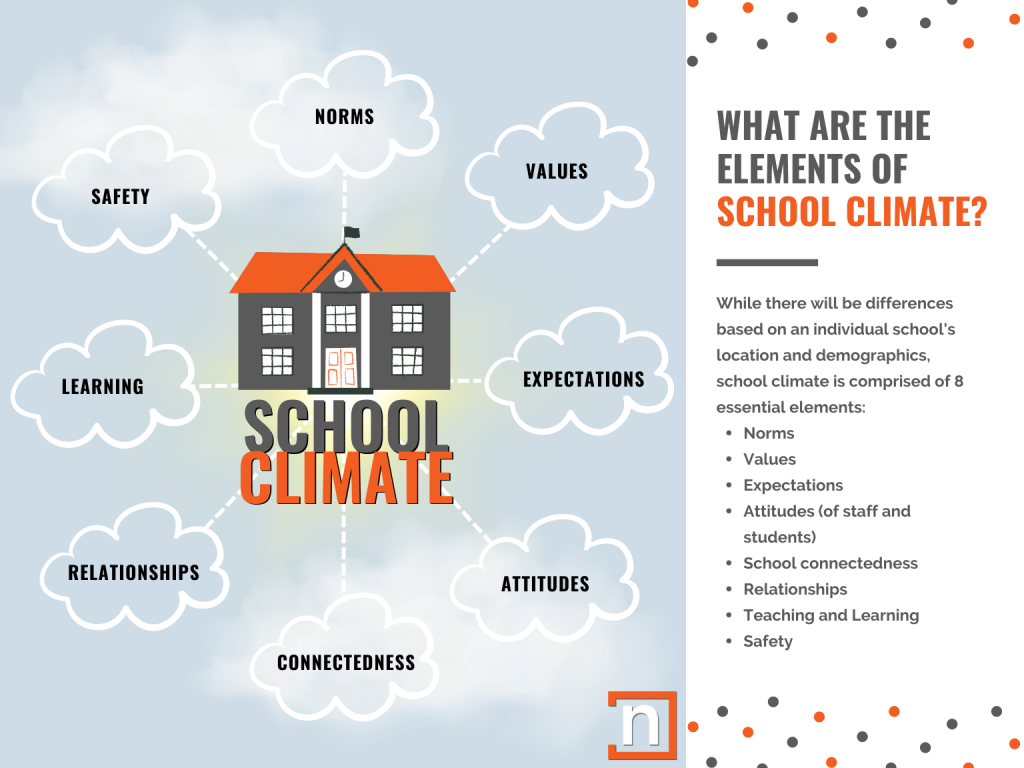
Attitudes
Attitudes may be the trickiest part of school culture, especially within middle and high schools, when students start to develop more apathy toward school. However, there are a few things to consider when it comes to cultivating positive attitudes in a school environment. First of all, the attitudes of faculty and staff can greatly influence the attitudes of students. If students are in an environment where they are constantly criticized and restricted, they will react accordingly and develop a deeper apathy towards their education. On the other hand, performative positivity should be avoided for the same reason- it can be alienating and make faculty and staff feel unapproachable.
Faculty should never feel pressured to be performative, as this can further drain their energy and potentially harm their relationships with students. Instead, it is important for school leaders to check in with their faculty often to hear their concerns and make sure that they feel supported and appreciated. A supportive environment is key to positive attitudes for both staff and students. In turn, faculty and staff can support students and help them feel like they have an authentic voice and space to express themselves. Avoid thinking of attitudes as “positive” or “negative”; attitudes are not polar and should not be treated so simplistically. The attitudes we want in schools are those of authenticity, care, and supportiveness. These are the attitudes that make students feel safe and connected.
School Connectedness
Creating a climate of connectedness requires a level of authenticity that is sometimes difficult for schools to grasp. As said before, there should never be pressure to be in a constant state of positivity, regardless of what self-help books have told us over and over. In an environment where staff and students are constantly pressured to “stay positive,” students will not feel safe coming forward with something that seems negative or outside the norm.
Instead, schools should aim for authentic connection with students and staff. The more connected students feel with each other and with their teachers, the more likely they are to open up about the important issues they are facing. This is imperative to developing an environment of trust, one in which students feel comfortable reporting suspicious behavior, coming to a teacher or counselor when in crisis, or simply divulging a serious problem for which they need help.
Relationships
Along with connectedness, relationships can make or break a school’s climate. Again, the goal is genuine communication with coworkers and students. The teachers who feel comfortable opening up about their struggles with each other are more likely to support each other in difficult situations. Likewise, the students who feel closer to their teachers are more likely to communicate when there is trouble later. It is up to faculty and staff to form relationships with students and to prioritize those relationships above all else. The trust that is built as a result is invaluable to the school climate and vital to an environment where students feel safe.
Teaching and Learning
While this may be the most obvious purpose of a school, teaching and learning affect school climate in ways we may not immediately realize. For years, the buzzword in education has been “engagement.” Are the students engaged? Is your instruction engaging? We often confuse engagement with entertainment. Teachers are not obligated to turn cartwheels in order to keep students entertained. However, whether or not students feel connected to what they are learning has a great impact on school climate. If they are stuck in dry lectures all day, they will inevitably feel restless and frustrated, possibly leading to behavior problems. At the same time, having an endless stream of entertainment in the classroom can negatively affect students’ ability to learn critical thinking. Finding a way for students to be active in their own learning is all engagement is really about. When students feel like they have something to contribute and something to work towards, their sense of value in their school environment skyrockets.
Other factors to consider in the learning environment are:
- Do students feel comfortable asking questions in your classroom?
- Do students feel comfortable making mistakes in your classroom?
- Are students given autonomy in their learning?
- Are the more reserved students given the same opportunities to ask questions out of the spotlight?
These questions may seem insignificant in the scope of school climate; however, these are issues that can greatly impact how safe or secure students feel throughout their day.
Safety
Now we come to the big one: Safety itself. School climate and school safety are inextricably linked. A school can be gated, with a camera at every corner, and an SRO at each door, but if the climate is out of balance, safety can take a complicated turn quickly. Some questions related to school safety and climate to consider are:
- Are all possible physical safety measures in place?
- Has the school exhausted its resources for security officers, cameras, gates, etc.?
- Are structures well-maintained and free of leaks and damage?
- What measures are in place to protect and enhance student mental health?
- What training does your staff receive in emergency preparedness?
- What is your staff’s attitude toward school safety? How often is safety discussed in faculty meetings?
- Are students encouraged to be involved in safety planning and awareness campaigns?
There are many other factors to consider when planning for safety. However, when it comes to safety and school climate, it is important to make sure students are not only aware but actively involved in the schools’ safety plans. It is also critical for faculty and staff to have training and resources available on emergency plans and safety issues. A safety-first approach to everyday routines is also crucial. Let students in on the reasons behind certain rules and expectations that relate to safety. When they understand how these seemingly arbitrary rules relate to their safety, they are more likely to invest in the school’s safety initiatives as a part of the larger climate.
School climate is a complex system that takes a lot of commitment and teamwork from faculty, staff, and students. nSide strives to help schools make their environments safer with a one-stop platform where faculty and staff can view and enhance Emergency Operations Plans, navigate a detailed map of their school’s facilities, increase their understanding of emergency procedures, and conduct threat assessments to identify students who are in crisis and get them the help that they need. To find out more about how we can help you make your schools safer, reach out to us at help@nside.io or send us a chat!
Sources:
https://www.erstrategies.org/cms/files/3714-schoolwide-values-ms-building-block-pdf.pdf




